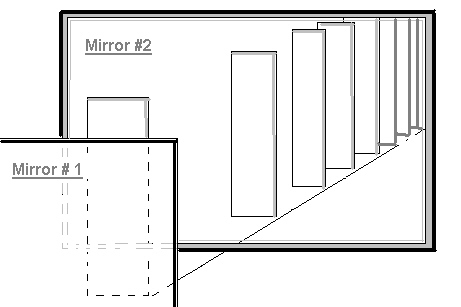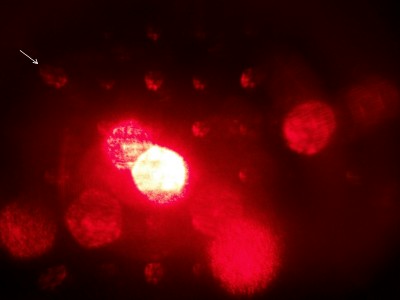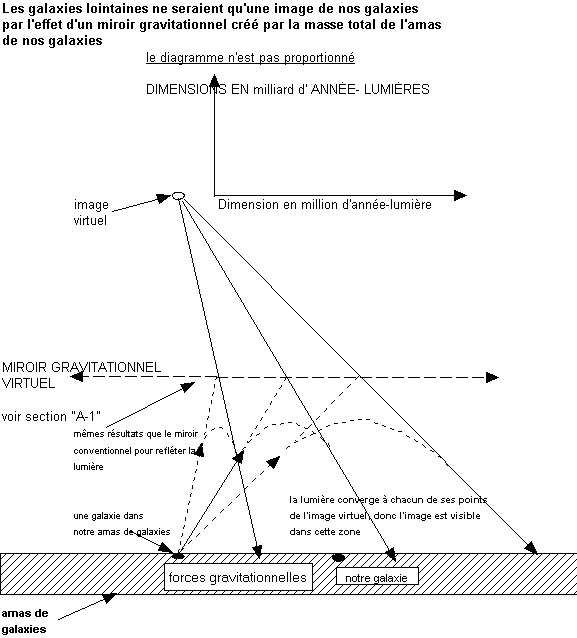GRAVITATIONAL MIRROR THEORY
|
Home page
INDEXSection 1) Documentation on gravitational mirrorsSection 2) How does a gravitational mirror works? Section 3) The spherical mirror Section 4) Photons trajectories calculations Section 5) Experimental proof Section 6) References |
Spherical mirror
|
|
OK we are on the right path, already we have a model that produce an infinite nombre of virtual images. The model is yet far from representing what we see in the sky. Now we will take a new approach, we are going to analyse spherical mirrors.A spherical concave mirror is made up of tiny flat surfaces. "clic"(see this independent reference) Now what happens if we place a small object in the centre of the sphere ? When the object becomes so small in relation to the sphere diameter, at the limit we can consider the spherical mirror as a multitude of two flat mirrors systems as shown below. B) Inside a Spherical Mirror
|
Everything is relative in sizeWhy can we say that the mirrors #1 and #2 are flat ?
Experimental Reproduction of aboveSee the picture below, notice the small balls that are lined up. In the upper corner of the picture, we identified by an arrow the first ball. This ball belongs to a matrix of several rows and columns as you can see on the picture. These are images formed as predicted above. They show that the local surface on the sphere can be considered as flat when the reflected object is relatively small. This is why we obtain the repetitive distribution of the images. In the experiment we used a 4 inches sphere mirror and a laser beam. The picture is an enlargement of a local surface on the sphere by a ratio of 30:1. The images in the foreground with a random distribution, are "caustics" images formation that will be discuss in section 5).
In background, the pattern as predicted above. The foreground's objects are caustics that we will explain in section 5) We are going back to the spherical gravitational mirrorThe spherical mirror theory now applies to the previous diagrams with flat surface for an observer seeing in the sky the virtual image of a galaxy. Why does it apply? Because all of the dimensions shown are not in the right proportions, everything on the diagrams occur in only a 30 second of an arc circle. This is less than the thickness of a line on the drawings. Therefore the flat surface shown for the imaginary gravitational mirror can be considered as being part of a sphere. As a reminder, we reproduce the drawing hereafter:
In the above diagram all the light rays travel on the thickness of a line. The virtual gravitational mirror is only say 20 to 30 seconds of an arc circle C) ConclusionWhen we take in account the distance in billions of years to the galaxies considered, our
galaxies cluster becomes a point in the centre of a sphere. But now for the gravitational mirror
to function, it requires that we have enough mass to create a gravitational field that will bring
back the escaping light. We can calculate the minimum mass require to bring back a photon leaving
our system at the speed of light. See the section "Calculation" where we give further instructions
to do the calculations. The results are that very little mass is required, the mass of our sun
would be sufficient. Just within our galaxy we have many times the critical mass, therefore yes
the gravitational mirror does work. Obviously the distance travelled by the light would be
tremendous, this is why we are talking in billions of light years away. Nothing can exist at the level
of those galaxies because it would perturb the formation of the gravitational mirror.
1) We observe an Universe that we can not really explain
OK, the model is still not fully representative of what we observe.
|

|



